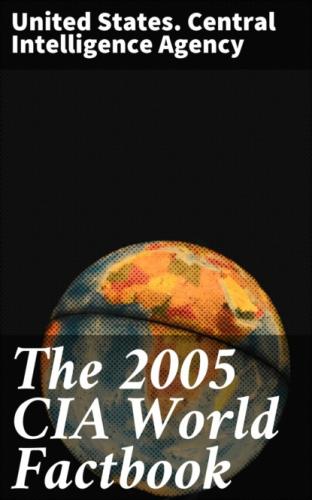Malacca (Indonesia-Malaysia). The decision by the International
Hydrographic Organization in the spring of 2000 to delimit a fifth
ocean, the Southern Ocean, removed the portion of the Indian Ocean
south of 60 degrees south.
Geography Indian Ocean
Location:
body of water between Africa, the Southern Ocean, Asia, and
Australia
Geographic coordinates:
20 00 S, 80 00 E
Map references:
Political Map of the World
Area:
total: 68.556 million sq km
note: includes Andaman Sea, Arabian Sea, Bay of Bengal, Flores Sea,
Great Australian Bight, Gulf of Aden, Gulf of Oman, Java Sea,
Mozambique Channel, Persian Gulf, Red Sea, Savu Sea, Strait of
Malacca, Timor Sea, and other tributary water bodies
Area - comparative:
about 5.5 times the size of the US
Coastline:
66,526 km
Climate:
northeast monsoon (December to April), southwest monsoon (June to
October); tropical cyclones occur during May/June and
October/November in the northern Indian Ocean and January/February
in the southern Indian Ocean
Terrain:
surface dominated by counterclockwise gyre (broad, circular system
of currents) in the southern Indian Ocean; unique reversal of
surface currents in the northern Indian Ocean; low atmospheric
pressure over southwest Asia from hot, rising, summer air results in
the southwest monsoon and southwest-to-northeast winds and currents,
while high pressure over northern Asia from cold, falling, winter
air results in the northeast monsoon and northeast-to-southwest
winds and currents; ocean floor is dominated by the Mid-Indian Ocean
Ridge and subdivided by the Southeast Indian Ocean Ridge, Southwest
Indian Ocean Ridge, and Ninetyeast Ridge
Elevation extremes:
lowest point: Java Trench −7,258 m
highest point: sea level 0 m
Natural resources:
oil and gas fields, fish, shrimp, sand and gravel aggregates,
placer deposits, polymetallic nodules
Natural hazards:
occasional icebergs pose navigational hazard in southern reaches
Environment - current issues:
endangered marine species include the dugong, seals, turtles, and
whales; oil pollution in the Arabian Sea, Persian Gulf, and Red Sea
Geography - note:
major chokepoints include Bab el Mandeb, Strait of Hormuz, Strait
of Malacca, southern access to the Suez Canal, and the Lombok Strait
Economy Indian Ocean
Economy - overview:
The Indian Ocean provides major sea routes connecting the Middle
East, Africa, and East Asia with Europe and the Americas. It carries
a particularly heavy traffic of petroleum and petroleum products
from the oilfields of the Persian Gulf and Indonesia. Its fish are
of great and growing importance to the bordering countries for
domestic consumption and export. Fishing fleets from Russia, Japan,
South Korea, and Taiwan also exploit the Indian Ocean, mainly for
shrimp and tuna. Large reserves of hydrocarbons are being tapped in
the offshore areas of Saudi Arabia, Iran, India, and western
Australia. An estimated 40% of the world's offshore oil production
comes from the Indian Ocean. Beach sands rich in heavy minerals and
offshore placer deposits are actively exploited by bordering
countries, particularly India, South Africa, Indonesia, Sri Lanka,
and Thailand.
Transportation Indian Ocean
Ports and harbors:
Chennai (Madras; India), Colombo (Sri Lanka), Durban (South
Africa), Jakarta (Indonesia), Kolkata (Calcutta; India) Melbourne
(Australia), Mumbai (Bombay; India), Richards Bay (South Africa)
Transnational Issues Indian Ocean
Disputes - international: some maritime disputes (see littoral states)
This page was last updated on 20 October, 2005
======================================================================
@Indonesia
Introduction Indonesia
Background:
The Dutch began to colonize Indonesia in the early 17th century;
the islands were occupied by Japan from 1942 to 1945. Indonesia
declared its independence after Japan's surrender, but it required
four years of intermittent negotiations, recurring hostilities, and
UN mediation before the Netherlands agreed to relinquish its colony.
Indonesia is the world's largest archipelagic state. Current issues
include: alleviating widespread poverty, preventing terrorism,
continuing the transition to popularly-elected governments after
four decades of authoritarianism, implementing reforms of the
banking sector, addressing charges of cronyism and corruption, and
holding the military and police accountable for human rights
violations. Indonesia has been dealing with armed separatist
movements in Aceh and in Papua.
Geography Indonesia
Location:
Southeastern Asia, archipelago between the Indian Ocean and the
Pacific Ocean
Geographic coordinates:
5 00 S, 120 00 E
Map references:
Southeast Asia
Area:
total: 1,919,440 sq km
land: 1,826,440 sq km
water: 93,000 sq km
Area - comparative:
slightly less than three times the size of Texas
Land boundaries:
total: 2,830 km
border countries: East Timor 228 km, Malaysia 1,782 km, Papua New
Guinea 820 km
Coastline:
54,716 km
Maritime claims:
